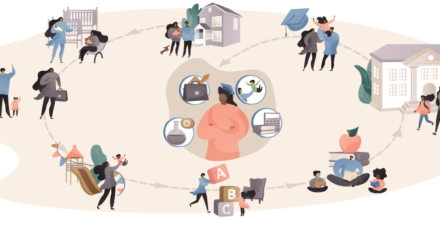Brad DeLong: Worthy reads on equitable growth, December 7-13, 2021
Worthy reads from Equitable Growth:
1. This is the best testimony that I have seen this month. In the United States today, we do not have enough within-the-household work to be done nor a sharp enough gendered division of labor for it to make any sense at all no matter what your theory of society to confine large groups of people to household production and care work. Yet today there is enough care work and household production to be done that it makes no sense to confine anybody to working full-time outside-the-home with zero flexibility. The neoclassical economist in me wants to believe that private agents seeking win-win bargains would have figured out these workforce and work-structuring questions in an optimal way long before now. But it manifestly is not true. Read Michelle Holder recent testimony before the House Select Committee on Economic Disparity and Fairness in Growth,” in which she says: “Fully investing in paid leave will spur economic growth through increased labor force participation and improved productivity today, and through enhanced human capital in the workers of tomorrow. Many people in the United States play dual roles as workers in the paid labor force and as unpaid caregivers to their loved ones. Occasionally, workers need weeks or months away from work to devote themselves fully to caregiving, such as when a new child enters a family through birth, adoption, or foster placement, or when a loved one struggles with a serious medical condition such as cancer, or even when workers themselves experience a serious medical need.”
2. This is the best conference panel I have watched this month. Discrimination continues to be an incredibly stubborn fact in the U.S. economy and society even though next to nobody will ever confess up to wishing to discriminate. As best as I can tell, most discrimination that takes place takes place either because of leisure and past-employment social-network structures, and because of a widespread albeit largely false belief that statistical discrimination is somehow wealth-maximizing. Read the papers included in Kate Bahn’s conference panel at the Southern Economic Association.
Worthy reads not from Equitable Growth:
1. We have a small but pricey grocery store two blocks away. We have a big Safeway 10 blocks away from us. Minor trips thus do not require a car. Nor do trips to the coffee shop, or the cleaners. In a different America, it would be possible for this to be true of most of at least close-in suburbia. But, regrettably, it is not. Read Addison Del Mastro, “Going Nowhere Fast: An intersection, and a Rorschach test,” in which he writes: “What is going on here? … A land-use pattern that virtually requires car trips for nearly everything. … What we’re seeing at this is really the opposite of overcrowding. It’s a little like one of those noisemaker toys with a couple of marbles inside a sphere. If you shake it, the marbles are everywhere and it feels like it’s full of them. But there are still just two. They’re going nowhere fast. … Total people and total car trips are not directly related, and it’s largely poor land use that makes them appear to be.”
2. Trying to make sense in historical perspective of the extraordinarily uneven progress of feminism across the globe in the 20th century, my big regret is that it looks like Alice Evans‘s big book on this is likely to be more than five years in the future. But who am I to talk? Read Alice Evans, “Ten Thousand Years of Patriarchy,” in which she writes: “What explains the Great Gender Divergence? … Three kinds of agricultural societies [do] … patrilineal, bilateral and matrilineal. In Eurasia, patrilineal communities transmitted land and herds to sons … [amid] tight restrictions on women’s sexuality and mobility. … Horticultural societies in Southern Africa and Southeast Asia tended to be matrilineal … [with] less concern for paternity, [so] women moved freely. … The Middle East and South Asia grew even more endogamous (through cousin marriage and caste). Since rumors of female promiscuity would dishonor the entire lineage, women were increasingly cloistered, especially in socially diverse towns. Meanwhile in medieval Europe emerged several latent advantages: nuclear families and participatory assemblies. … Patriarchal dominance was not geographically determined, but was also a product of cultural evolution. … Patriarchy was cemented in Eurasia by the emergence over 2000 years ago of religions with Big Gods meting out supernatural punishment. … Progress toward gender equality was contingent on strong growth, weak systems of kinship and democratisation. If prevailing wages are too low to compensate for the loss of honor, female seclusion persists (as in much of India, Iran and Egypt). These effects are compounded by political trajectories.”



